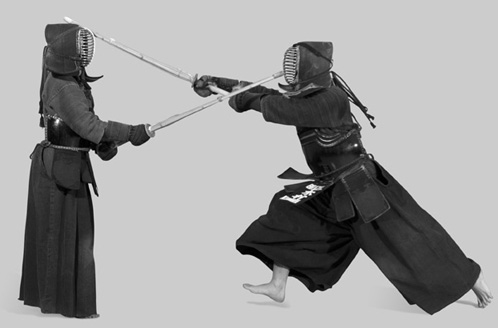About Kendo
Kendo or "way of the sword", is the martial art of Japanese fencing. Kendo is a physically and mentally challenging activity that combines strong martial arts values with sporting-like physical elements. Kendo embodies the essence of Japanese fighting arts.

The Purpose of practicing Kendo is:
To mold the mind and body,
To cultivate a vigorous spirit,
And through correct and rigid training,
To strive for improvement in the art of Kendo,
To hold in esteem human courtesy and honor,
To associate with others with sincerity,
And to forever pursue the cultivation of oneself.
This will make one be able:
To love his/her country and society,
To contribute to the development of culture
And to promote peace and prosperity among all peoples.

